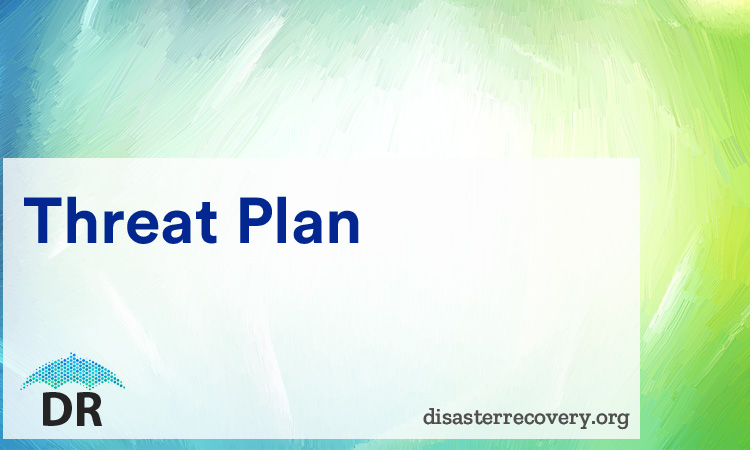Business in today’s world is conducted through many interconnected systems and operations are carried out over a complex network of interdependent entities. In such a scenario, security breaches that compromise sensitive information can cost companies losses in the range of millions of dollars. Time and precision bound operations can’t exist without robust protection systems that safeguard a company’s systems and data at a reasonable cost.
Threat Plan

A comprehensive threat plan that constantly aims at addressing information security related issues has become imperative in order to protect an organization’s business interests and safeguard its reputation.
Overview of a Threat Plan
In broad terms, a threat plan consists of the following three stages:
- Identification – This stage involves spotting the potential threats that could possibly hamper a business’ proper functioning before an incident actually occurs. Risk identification requires a thorough understanding of an enterprise’s operations and its vulnerabilities that might be exploited by both internal and external factors.
- Assessment – Once a potential threat has been identified, the next step is to understand its unique characteristics and how it affects business activity. This is an important phase as it can save a company unnecessary expenditure while creating a mitigation strategy.
- Mitigation – Once a business unit’s information system has been compromised, all available resources are mobilized to prevent as much damage and loss as possible. This is a stage of execution in times of emergency that often requires adapting previously planned strategies to the existing situation.
A good threat plan that effectively counters security breaches sufficiently satisfies the following information security parameters:
- Confidentiality: Information can only be accessed based on the rights and privileges granted to users.
- Integrity: Information is precise, accurate and valid, without errors of any kind.
- Availability: Information is available at all times and can be easily obtained.
- Accountability: Each information request/response pertains to a specific user or group of users.
The above four data security parameters are weighted and prioritized based on industry and company specific needs and policies respectively.
How to Plan Against Potential Threats ?
Technology
The fight against information security breaches begins with acquiring the appropriating technology necessary to keep a business entity’s data safe and secure. This is achieved by deploying a combination firewall solutions, intrusion detection systems, prevention and data leakage measures. In many countries, the use of technology for the sake of data security is also influenced through government regulations and compliance norms.
Cost
Price also plays a major role in determining the security solution that best suits an organization’s needs. No information security solution is a 100% secure and the extent of security needed depends largely on the criticality of a business entity’s operations. A commercial enterprise spends a lot of time trying to understand the extent of risk it can afford to bear without jeopardizing its prospects based on which a security budget is decided. Once a budget is finalized, the company then looks for a suitable information security solution that addresses its unique set of requirements.
Archiving
Business entities are better capable of dealing with threats they are well acquainted with. Detailed archives of past security breaches, cyber attacks and thefts of valuable information can help organizations identify their operational pain points and also pick patterns in the kind of security threats to which their data and systems are most susceptible.
Employee Awareness
A number of internal factors contribute to valuable business data being compromised. Password leaks, malware and phishing attacks all play their part in sneaking in through the toughest and most foolproof systems. Adequate employee training and awareness on good business practices and precautions can help eradicate these loose ends.
Having a clearly defined plan to combat the various threats and potential risks to a business brings with it a number of advantages that can significantly boost a company’s performance. Operations become more streamlined, consistent and focused. The management and leadership team can confidently take bold business initiatives and even a few calculated risks when they have the assurance that security threats are under control. And last but not the least, customers are left with little or nothing to complain about which does the company’s reputation a world of good.

